Rules for planting geraniums at home
If you want to decorate a room or lawn in front of your house with a beautiful plant, plant a geranium. This flower is also called pelargonium, and it has many types. On the windowsills, you can often see geraniums, delighting people with bright flowering. Its leaves have a specific smell that can repel insects and purify the air. Whoever doesn't like the exotic scent is planted with fragrant geraniums that smell like lemon. The variety of geraniums is amazing, and everyone can handle reproduction and care, which is why it is so popular.
Planting room pelargonium
Geranium is an unpretentious plant. Its cultivation does not require special care at home. For planting, pick up a container with several drainage holes at the bottom. The roots of the plant are sensitive to moisture and can rot from constant contact with water, so you cannot do without good drainage. Get a pot about 25 cm deep. This is enough for growth and flowering.
- Planting should be done in a clean container. Be sure to wash the pot and rinse with a mild manganese solution. It will kill bacteria and pest larvae.
- It is better to use purchased soil and try to choose a soil that passes water well and dries quickly. This will protect the roots from rotting. Ideal for growing at home, a versatile earthy mix.
For a successful planting, put a small layer of expanded clay in the pot. Pour some sand on top and fill most of the container with earth. Make a small indentation in it. If you want to plant geraniums with a shoot, put a stalk with a root there and cover it with soil. Pour well with settled water and place the flower pot on the windowsill.
How to plant geraniums in open ground
Types of garden pelargonium look great in the garden in front of the house and bloom continuously until the onset of cold weather. These are perennial flowers, but if not properly cared for, they die in winter.
Pelargonium should be planted in the spring, when the last frosts are over.
- First of all, thoroughly loosen the earth by digging it up with a shovel to a depth of 35 cm.
- Then scatter 5-10 cm of compost over the surface of the bed and mix it with the top layer of soil. This will enrich the soil with the nutrients needed for the geranium to grow.
- Dig holes 25 cm deep. Small species should be planted at a distance of 15-20 cm, large ones - 60 cm.
- Gently pull the rooted process out of the pot and place it in the hole. Sprinkle with earth and cover well with water.
To plant geraniums, select a place in the garden in the sun. The flower loves light and warmth.
Plant care
Garden and indoor types of pelargonium need proper lighting. Growing with a lack of light leads to the fact that the plant loses its splendor, begins to stretch upward and withers. In the spring, flower pots can be taken out to the balcony, where geraniums grow rapidly. Sometimes a red tint appears on the leaves from bright light. This is not a sign of illness and is considered completely normal.
Do not spray geranium leaves with water. Care includes moderate watering. It is produced systematically, preventing the soil from drying out. At the same time, care must be taken that the soil is not too wet and moisture does not stagnate in it.
In winter, watering at home must be reduced. Plants store water well, so water them 2-3 times a month, but at least. Overdried soil leads to the fact that the leaves on the pelargonium turn yellow and fall off.
For the plant to have a beautiful crown, cut off the branches that stretch in height. New shoots will begin to grow from them.
Top dressing geranium
In addition to comfortable conditions for existence, the cultivation of pelargonium requires regular feeding. In spring and summer, garden and indoor geraniums need to be fertilized once every 2 weeks. In winter, the amount of dressing should be reduced. It is enough to feed the plant once in January using half the usual dose.
It is best to use purchased mineral fertilizers at home. For flowering to be abundant, geraniums are necessary:
- phosphorus;
- potassium;
- nitrogen.
These elements are found in the Dutch fertilizer "Crystalon". It is excellent for root processing of pelargoniums. Dissolve 2 tbsp. l. top dressing in 10 liters of water and water the plant according to the instructions. Such care is necessary for geraniums after winter rest to accelerate growth.
Important!
Remember not to feed the plant with liquid fertilizer when the ground is dry. This care can burn the roots. First, pour a little water over the pelargonium, and after an hour add top dressing.
Iodine water increases growth and flowering well. Put a couple of drops of iodine in the liquid and water the potted flowers. The main thing is not to make the solution too concentrated, so as not to burn the root system. At home, geraniums are often fed by stirring 100 ml of milk in a liter of pure water.
How to care for autumn and winter
All geranium species love cool, sunny autumn weather. Then they take a break from wild flowering and gain new strength. At this time, caring for pelargoniums consists of pruning, top dressing, crown formation. If the flower pots are outdoors, bring them indoors when the temperature drops to 12 degrees Celsius.
- Garden geraniums must be cut to a length of 5 cm before the onset of the first frost.
- Dig out of the ground, cut the roots by a third.
- Prepare a wide tray, fill it with soil mixed with a little compost and plant the plants.
- Water and place on the windowsill.
In spring, you can cut the cuttings of young shoots and start breeding geraniums. Or plant overwintered plants back in the ground.
Secrets of growing pelargonium from cuttings
To grow a new geranium bush, florists use different methods. The easiest way to do this is by cuttings. For breeding to be successful, you need to prepare.
- Get plastic cups, make small holes on their bottom and pour drainage inside.
- Prepare the soil for planting. To do this, add a third of the sand to the universal soil and mix.
- Then pour with a weak solution of manganese. If not, moisten the ground with boiling water. Such disinfection will destroy harmful microorganisms that can harm the appendage.
- When the soil has cooled, pour it into cups and start planting.
Reproduction by cuttings is carried out in early March. Choose strong shoots and cut off stems 3-5 cm long from their top. They must have 3 green leaves. The cut is sprinkled with coal dust. The shoot is carefully inserted into a glass filled with earth, tamped and watered with a small amount of water. If the flower has released arrows of buds, cut them off, otherwise they will interfere with good rooting.
Place the cups with cuttings in a wide tray and place in the shade. It is desirable that the temperature in the room does not exceed 15 degrees. Provide watering by pouring a small amount of water into the pan. Do this when the soil in the cups begins to dry out.
If you notice that the leaves have turned yellow, reproduction is not going well. Cover the scions with a half liter jar for a couple of days. A greenhouse setting will help take root.
After 2-3 weeks, new leaves will appear on the cuttings. Now you need to wait for the roots to harden. This usually takes about a month. Then geraniums can be planted in the garden.It is advisable to leave indoor plants in a temporary container until the first flower buds appear on them, and then transplant them into permanent pots.
Some gardeners root pelargonium cuttings in water. Such reproduction is not successful for everyone, because the stem of the flower often begins to rot from contact with moisture. To try this method, cut the shoot and place it in a jar with a little water. Wait for the roots to grow back and plant the cutting in the ground.
Seed planting
Seed propagation is a lengthy process. If you want to grow pelargonium by this method at home, choose seeds carefully. The germination and health of the flower depends on their quality. Purchase planting material only in specialized stores or from trusted suppliers.
- Prepare a wide container with small holes at the bottom, fill it with fertile, disinfected, moist soil.
- Sow the seeds on top and press them lightly into the soil. Cover the container with plastic wrap and place in a warm, shady place.
- Watch the crops carefully, and when the first shoots hatch, remove the film. With the appearance of leaves, geraniums can be transplanted into a pot.
Seed propagation is laborious and time-consuming. The difficulty is that the crops do not always sprout, so it is easier to buy a ready-made plant or root pelargonium with cuttings.
When the flower becomes cramped in the pot, it must be transplanted. You can also divide the bush into several parts and plant it in separate pots. Fill the geranium with water the day before transplanting. Then carefully remove the plant, divide it, being careful not to damage the roots, and transplant it into new nutrient soil. This reproduction is considered the fastest.
Disease control methods
The main culprit for geranium disease is improper care. To keep it healthy, regularly loosen the soil, do not overmoisten the soil, remove dry leaves.
Sometimes pelargonium is affected by gray rot. The fungus covers the plant with dark spots, and it begins to disappear quickly. In summer, geraniums can attack whiteflies. It is easy to get rid of it with Iskra, Actellik or Commander drugs. Dilute them according to the instructions and process the plant. Growing pelargonium is a fun, effortless and cost-effective activity. Provide her with good feeding, competent watering, and she will decorate your home for a long time. Geranium bloom looks spectacular. Therefore, gardeners often use the plant in landscaping. It is happily planted near alpine hills and around large tall bushes.
To combat the disease at home, do the following:
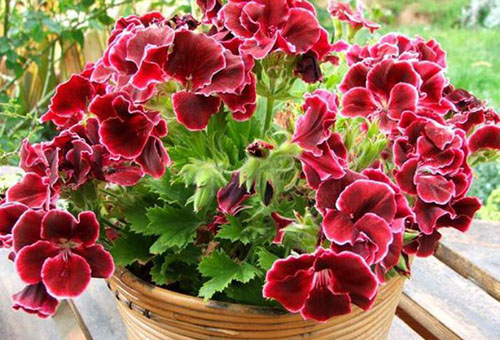
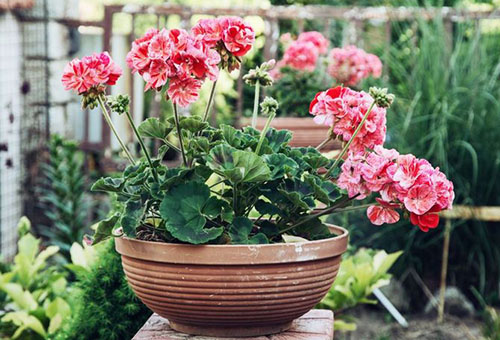


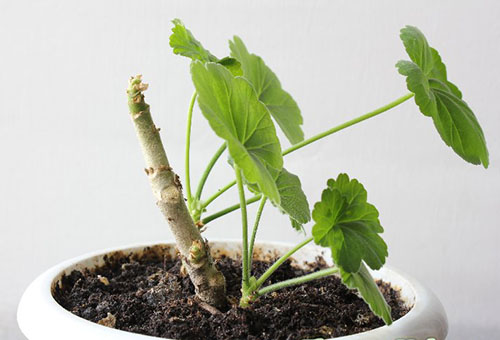
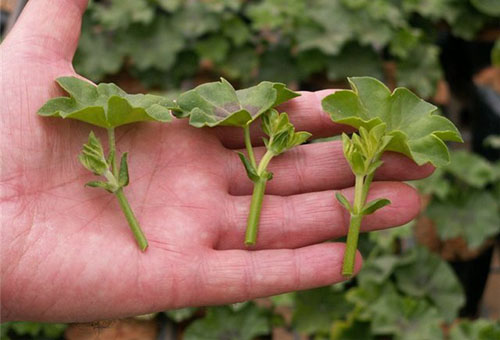
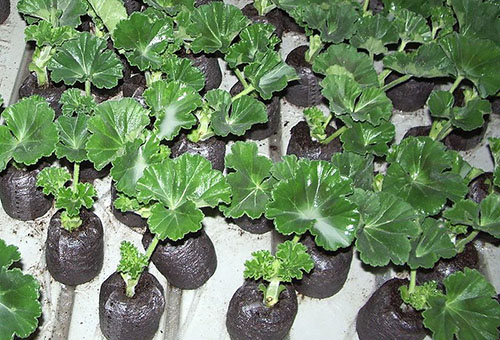
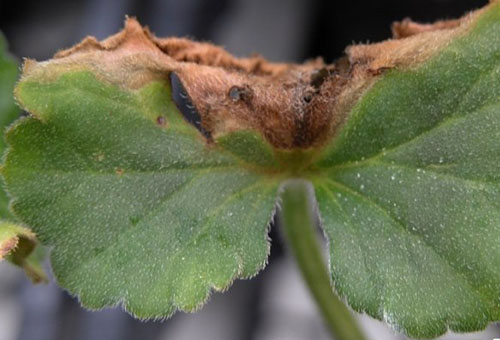

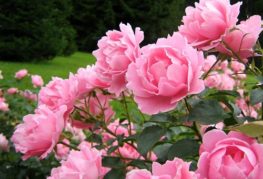

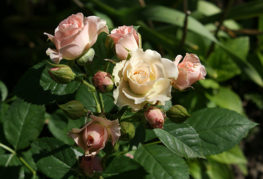
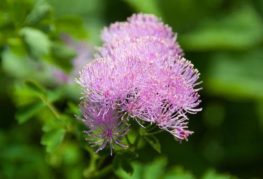
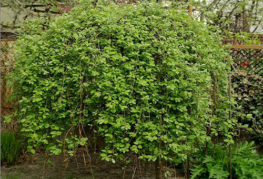
and if an arrow appears how to save it and collect seeds